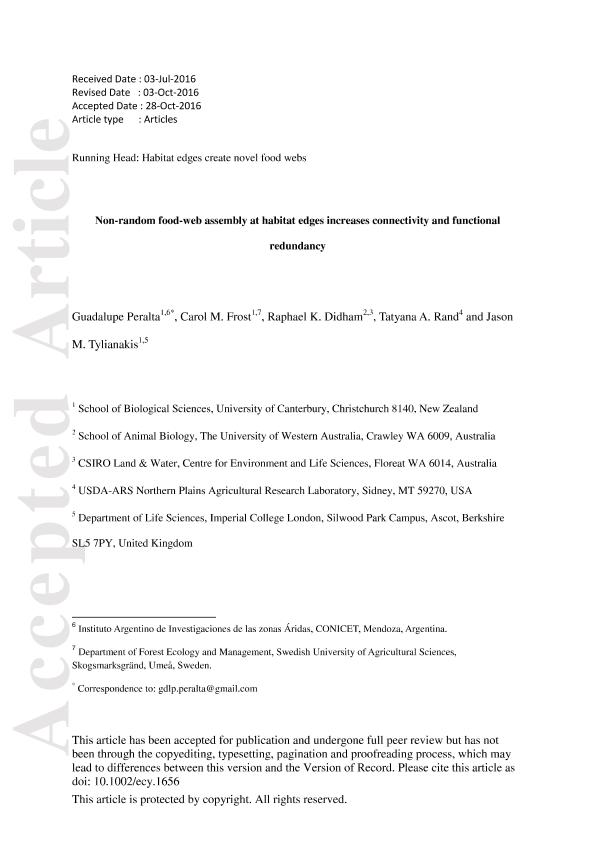Artículo
Non-random food-web assembly at habitat edges increases connectivity and functional redundancy.
Fecha de publicación:
03/2017
Editorial:
Ecological Society of America
Revista:
Ecology
ISSN:
0012-9658
Idioma:
Inglés
Tipo de recurso:
Artículo publicado
Clasificación temática:
Resumen
Habitat fragmentation dramatically alters the spatial configuration of landscapes, with the creation of artificial edges affecting community structure and dynamics. Despite this, it is not known how the different food webs in adjacent habitats assemble at their boundaries. Here we demonstrate that the composition and structure of herbivore-parasitoid food webs across edges between native and plantation forests are not randomly assembled from those of the adjacent communities. Rather, elevated proportions of abundant, interaction-generalist parasitoid species at habitat edges allowed considerable interaction rewiring, which led to higher linkage density and less modular networks, with higher parasitoid functional redundancy. This was in spite of high overlap in host composition between edges and interiors. We also provide testable hypotheses for how food webs may assemble between habitats with lower species overlap. In an increasingly fragmented world, non-random assembly of food webs at edges may increasingly affect community dynamics at the landscape level.
Archivos asociados
Licencia
Identificadores
Colecciones
Articulos(IADIZA)
Articulos de INST. ARG DE INVEST. DE LAS ZONAS ARIDAS
Articulos de INST. ARG DE INVEST. DE LAS ZONAS ARIDAS
Citación
Peralta, Guadalupe; Frost, Carol M.; Didham, Raphael K.; Rand, Tatyana A.; Tylianakis, Jason M.; Non-random food-web assembly at habitat edges increases connectivity and functional redundancy.; Ecological Society of America; Ecology; 98; 4; 3-2017
Compartir
Altmétricas




